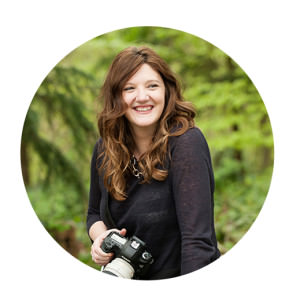Childrens photography; Shooting for competition success
Childrens photography; Shooting for competition success
This year, I was incredibly pleased to have been awarded Children, Family & Lifestyle Photographer of the Year from the Guild of Professional Photographers. I have been actively entering the competition for 2 years and am now supporting some up and coming children’s photographers on their journey. With this in mind, I thought would be useful to share some of my experiences and offer my thoughts on how you can plan your road to success.

Nina Mace Children’s photography
Changing your mind-set
If you were about to enter an exam room, and have you essay judged by a team of experienced judges, how would you prepare? Entering photography for competition is a similar process. Rather than editing and entering images on the last day of the month hoping for the best (and lets be honest we have all been there), how can you plan for a more successful result?
1. Knowledge is key
Back to my exam analogy. You know an exam deadline is looming, and you need to start preparing. Your first task is to arm yourself with as much knowledge as possible. You go and look at past exam papers; you look at successful essays and try to understand why they have done well. Exactly the same applies for photography competitions! The great news is this information is readily available and very easy to access. I would suggest:
– Visiting the competition website and reading up on the rules and judging criteria. Really try to absorb what at the key elements the judges are looking for (strong storyline, well-crafted light, excellent post processing etc.).
– Review past winners. If you are entering the children’s category for example, go and take a look at the past Golds, Silvers and Bronzes. This isn’t about trying to shoot the same images, but instead understanding what it takes to lift an image from Bronze to Silver, and then Silver to Gold. What are the constants that you can see in the images? For examples there no distractions, the post processing will compliment the image, is the light well crafted etc. Also consider what takes an image to Gold – all of the technical elements are ticked, but these images often have a storyline, creative spin or impact that really pushes it to the forefront.
2. Fail to prepare, prepare to fail
Back to that exam – What would your chances of success be if you hadn’t prepared properly? Say you had no calculator, you didn’t know which room the exam was in, you didn’t know what time of day it was?
Preparation is absolutely key for competition photography. Yes, you may well achieve a great score for an image taken on a paid for client session, but my experience is this is rare as you cannot control all the elements you need to (refering back to the above point about absorbing the judging criteria)
So before you go to shoot for competition, sit down and come up with a plan. I have often sketched my images to keep me focused. Elements to consider:
- When
– What time of day do you want to shoot to deliver the light you are looking for? if you are looking for beautiful backlight (my favourite) then you need a glorious evening and let’s be honest, how hard is it to plan for this type of light in the UK? You need a plan A, a plan B and probably a plan C.
- Where
– Consider where you are going to shoot ahead of time. Where is the light good and what is the background you are looking for?
- Who/Why
– Also very important is who you want to photograph. What is the story of your image and does it require a boy, a girl or siblings? if you know what background you are using this can help you work out the type of child you want to photograph, even down to their hair colour. For example I love red hair against a strong greenback ground so I often put out casting calls for red haired children at certain times of year. This is also the time to consider clothing, what works with the background you are looking for and what wouldn’t?
- How
Thinking ahead of time gives you the best chance of success – so which lens are you planning on using? Will you need additional light? What depth of field will work best to tell your story?
3. Timing
This is back to my point of editing and entering on the last day of each month. Would you start revising for an exam on the day? Ideally (and with hindsight which is a wonderful thing) this is how I would plan my month
- Week 1 – Planning. Know what I want to take, when, where and how.
- Week 2 – Shooting. Allowing myself 7 days for the best light to appear.
- Week 3 – Editing and refining, and if necessary, reshooting. If I am so close to what I want to achieve but its not quite right, I have been known to go back and reshoot again.
- Week 4. Time to review and time to distance myself! If I edit an image and go back and look it again days later, I often see something I had missed before. This time for me is crucial to remove myself and my emotion from the image.
Your pathway to success
My experience is it takes time and planning to be successful in competition, but being more structured with your approach does lead to success. It has also helped my photography grow and made me able to be far more objective that I was a couple of years ago. Hopefully you will be able to take my learnings and develop your own process. The end result is you will feel more in control over what you are entering, and that you have more confidence in how your images will score.
I hope this has been some use and if you have any questions feel free to leave them in the comments below. I would love to see some of your journeys over the coming months! Good Luck! Children’s photography
For more articles for Professional photographers including what does branding really mean, how to scout for great family locations, how to shoot for competition success, visit here https://www.ninamacephotography.com/professional-photographers-blog/
Nina
Nina is a Photographer based in Hertfordshire who specialises in Children’s photography. She also offers Beginners Photography Training for Mums and Dads with DSLR’s and 1-2-1 mentoring for aspiring professional photographers. She works throughout Hemel Hempstead, St Albans, Berkhamsted, Kings Langley, Tring and Harpenden.



